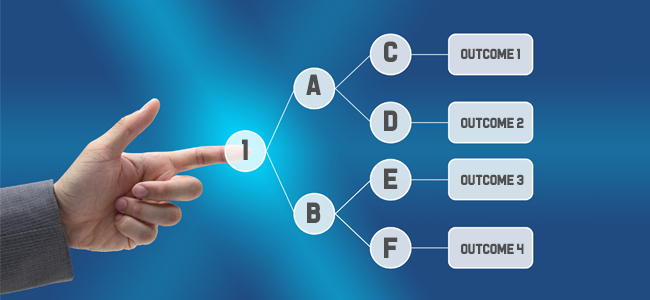While data mining might appear to involve a “long and winding road” for many businesses, decision trees can help make your data mining life much simpler. By using decision trees in data mining, you can automate the process of hypothesis generation and validation. Here are some thoughts from Research Optimus about helpful uses of decision trees.
Advantages of Using Decision Trees and Where They Can Be Used
Decision trees derive their name from a tree-like graph that depicts decisions and possible outcomes. A key advantage of a decision tree is the intuitive nature and ease of explaining what can happen in different decision scenarios.
Decision trees have practical uses in diverse settings such as business development, project management, finance and logistics. Anytime you want to portray different alternatives for even the most complicated choices such as mergers and international expansion, decision trees should always be considered.
Decision trees in data mining are also useful for organizing and handling raw data with very little preprocessing.
Using Decision Trees to Explore and Solve Business Problems
Finding business problems and solving them is often a time-consuming chore for any busy executive or manager. Decision trees can provide an abbreviated method by showing predicted outcomes for each split of the tree. Visual decision-making can be used to simplify problems as different as currency exchange rates and credit card attrition.
Using Decision Trees to Transform Raw Data
In data mining, preprocessing of data is an important step that helps you deal with incomplete or inconsistent data. Decision trees can make this critical step easier and more effective by automating the entire process so that data is transformed into an understandable format.
Data preprocessing is usually essential in customer relationship management — for example, tracking web sites and time spent on each site yields more useful information for consumer research.
Growing the Tree
To get started with any decision tree, your initial mission is to “grow the tree” by finding the best question to ask at each branch (decision) point. Remember that your overall goal is to organize the data — ultimately you want to create a tree that works with all available data. At the bottom of the tree, you will typically start with decision nodes that result in data branching out to one type or the other.
When Does the Tree Stop Growing?
In most cases, your decision tree algorithm will stop growing when one of these three criteria are met:
- The question results in only one record — further questions cannot refine the segment any further.
- All remaining records have identical features — with the same characteristics, further questions will be unproductive.
- The decision results in a substantial improvement — this is when you feel that “enough is enough” and choose to stop further decision-tree growth.
Business Example of Decision Tree Analysis
Let’s consider a very realistic proposition — upgrading legacy software and databases (or not). You can prepare a decision-tree map that explores all consequences along with quantitative probabilities to convince shareholders. At the bottom of the tree, you can start with two groups of stakeholders: (1) those who believe that legacy upgrades can save millions, and (2) those who choose the “don’t change” scenario of sticking with legacy software because it is the safest option. Among the first group (upgrade), two additional branches might include buying software or building new software internally.
Your Next Decision?
Making business decisions more quickly will help you satisfy demanding customers and stay ahead of your competitors. Let Research Optimus show you how to do this in the most cost-effective fashion.
Have you used decision-tree analysis to evaluate project risk management and other data management tasks? Please share your thoughts with a comment below and by sharing this article with social media buttons.
– Research Optimus





